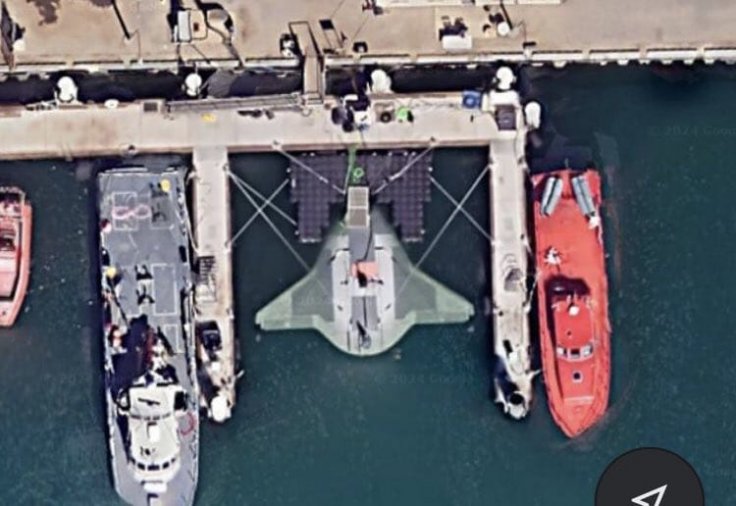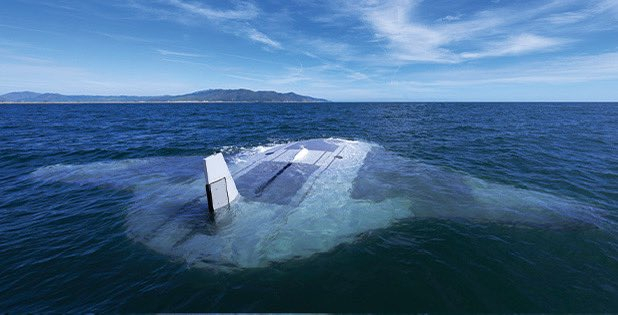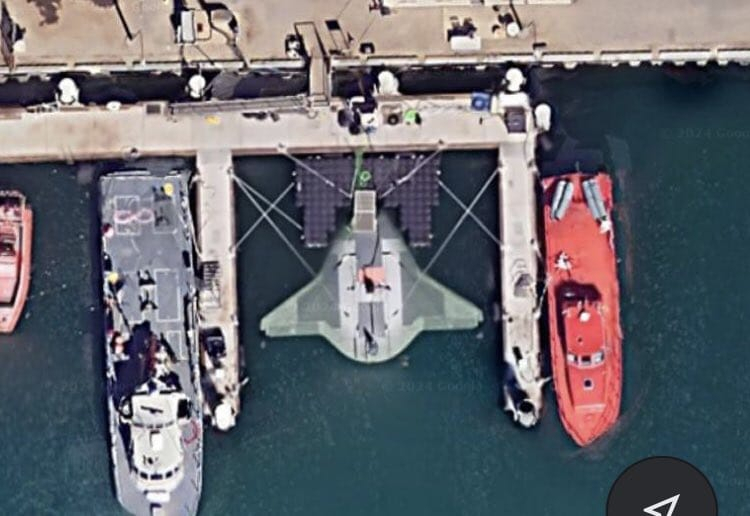[ad_1]
A top-secret US Navy submarine prototype, dubbed the “Manta Ray,” has been spotted on Google Maps, sparking widespread interest. The vessel, seen docked at the Port Hueneme naval base in California, quickly became a topic of viral discussion. Its unique, “Star Wars”-like appearance sets it apart from other vessels at the base.

X
The Manta Ray, named for its sleek, marine-inspired design, is engineered to operate deep underwater in low-power mode for extended periods. Developed by Northrop Grumman, it is part of a US Navy initiative to create long-range underwater weapons. The drone is designed to hibernate on the ocean floor without refueling, showcasing advanced technology in autonomous underwater operations.
Dr. Kyle Woerner, the Manta Ray program manager at DARPA, highlighted the vehicle’s capabilities in a recent news release. He emphasized that the vehicle uses “efficient, buoyancy-driven gliding” to navigate the water, making it both stealthy and energy-efficient. Successful full-scale testing has validated the Manta Ray’s readiness for deployment in real-world missions. Its design includes several modular payload bays of various sizes, allowing it to undertake a wide range of naval operations. The modularity also enables the drone to be disassembled and shipped in standard containers, eliminating the need for specialized port facilities.

The Navy’s testing of the Manta Ray off Southern California’s coast lasted over three months. This development is seen by defense analysts as a strategic move to enhance US capabilities against Russian and Chinese submarine technology. Both nations have been advancing their underwater drone programs. Russia, in particular, has announced plans to acquire nearly three dozen underwater drones, with claims of a range of 6,200 miles, nuclear armament potential, and speeds reaching up to 100 knots (115 mph).
The unveiling of the Manta Ray underscores a significant leap in underwater drone technology, reinforcing the US Navy’s strategic posture. As this cutting-edge technology continues to evolve, it remains a crucial component in the ongoing efforts to maintain naval superiority in the face of emerging global threats.
[ad_2]
Source link




